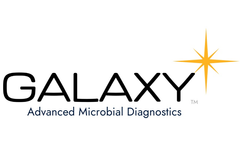Human Microbiome Articles & Analysis
10 articles found
The human microbiome on the other hand consists of all microbiota residing in human tissues, internally and externally, and the biochemical by-products of host-microbe interaction. It is known that there are more microbial cells than human cells in the body therefore the human microbiome is known ...
This may also be done in silico if a reference genome is available for the host, as in the work of Perez-Losada et al. who considered the impact of host–pathogen interactions on the human airway microbiome. Finally, transcriptome reference databases are limited by their coverage. ...
The available reference databases for annotation of the 16S rRNA gene include GreenGenes, the Ribosomal Database Project (RDP), SILVA, and the Human Microbiome Project (HMP). Beta (β) diversity to compare microbiomes Beta (β) diversity measures the difference in bacterial community composition for different samples. ...
Disease-causing microbes are often found in the human microbiome. So, when does the presence of pathogenic microbes indicate an infection? ...
Gut microbes are considered "virtual organs" that influence host health and are involved in disease research. The human gut microbiota has a large gene pool, encoding approximately 100-150 times more genes than the human genome, and contains a rich resource of enzymes with the ability to metabolize drugs. ...
The Use of Microbiome Sequencing in Cancer Research A growing body of evidence now suggests that human microbial dysbiosis has a crucial role in cancer development and progression. ...
Even so, in evaluating both the structure of the human microbiome and its genetic diversity using read-based mapping for microbial reference genomes, the HMP asked a major question. ...
Lipopolysaccharide is a virulence factor produced by bacteria, which often triggers systemic inflammation through the body's circulation; recently, in a study published in Journal of the American Heart Association entitled "Genetic Profile of Endotoxemia Reveals an Association With Thromboembolism and Stroke," scientists from the University of Helsinki in Finland discovered a genetic marker ...
A large part of bacterial, archaeal, viral, and fungal microbial taxa consists of the human microbiome. While many of these microorganisms are commensal, some are harmful to humans and many are symbiotic. ...
We suggest an alternative way forward that recognizes human ingenuity and invention while respecting the need to treat ecosystems more as organisms than as disposable and replaceable technology, and that emphasizes the importance of ecosystem health in ensuring food and environmental security for the world. ...
ByEnsia




